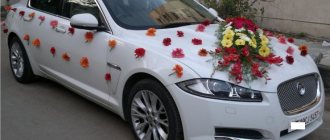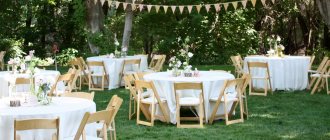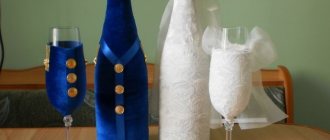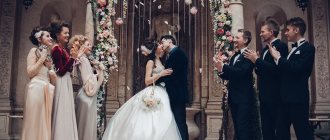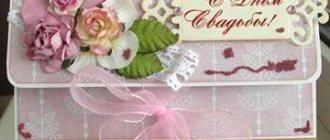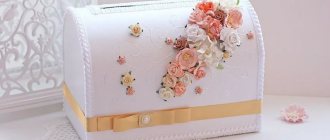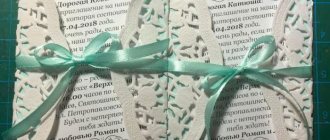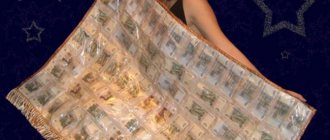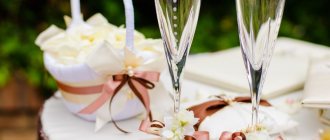In this article: #1 Animal ornaments #2 Unearthly ornaments #3 Elemental ornaments #4 Floral ornaments #5 Rule for embroidering a wedding towel #6 Example of a Family Tree #7 Requirements for a towel embroiderer You
should like the wedding towel and its design. Take and embroider the pattern you like. Be sure to learn the embroidery symbols before you start embroidering. Ornament should come from the heart and soul. But the best thing, of course, is to come up with your own design for a towel or duplicate your grandmother’s, if there is one in the family.
Animal ornaments
The rooster is a symbol of men's health, happiness and wealth.
Dove – represents family, love and loyalty.
Roosters, falcons and doves in pairs symbolize the bride and groom. The birds are always positioned with their heads facing each other and their wings down, thereby symbolizing their readiness to start a family. But under no circumstances should you embroider nightingales and cuckoos on wedding towels, as they are symbols of a widow and a single guy.
Peacocks are birds of family happiness and are depicted with a wreath on wedding towels. Sometimes peacock feathers were woven into the bride's wedding wreath.
The swallow is a symbol of good.
Unearthly ornaments
Flowerpot and Bereginya - the protective ethnic ornament is a flowerpot (huge branches with birds and flowers) and Bereginya (an image of a female figure or a mysterious flower). They were usually embroidered with red threads and symbolized cleansing fire and the sun. This pattern was also associated with amulet, healing, cleansing and protective magic.
Crown - represents a request for God's Blessing of marriage. There should not be any inscriptions or patterns above it.
Maternal symbol. The Mother symbol is the main one on the wedding towel. It is based on an eight-pointed star, which is framed by a stylized garland of flowers, symbolizing the greatness of the mother, her important role in the continuation of life.
Embroidery of Slavic towels patterns
The process of creating towels is creativity, magic. When creating embroidered work, craftswomen not only put into it skill, energy, charge, but also their soul and love. Therefore, an embroidered towel is not just a beautiful thing that pleases the eye, but also an object that can become a talisman for a person, helping him to recharge himself with positive strength.
Since ancient times, Slavic culture has distinguished several types of towels, each of which performed its own function:
Handbrake - it was used to wipe the face and hands. These products were embroidered in a special way, the main patterns were swastikas, and later rhombuses. At the same time, when the lower edge was embroidered, wide stripes were embroidered first, then narrow ones, and the upper edge, on the contrary, was embroidered from narrow to wide stripes. This pattern meant the rising and setting of the sun, which is why they wiped themselves with such a towel according to a special ritual: in the morning they wiped their face with the lower end, and in the evenings with the upper end. They believed that in the morning a person received strength, and in the evening he relieved fatigue with a towel.
- A fly is a small towel-shawl. Often embroidered with white thread. This type of towel was used by the bride to wipe away her tears; it was tied on the bride’s hand when she was taken away from her parents’ house.
- Bozhniks are towels that were used to decorate icons.
- Maternity - a towel in which a child was received at birth.
- Podorozhny is a towel that was given to people leaving their home. A simple but thoughtful pattern was embroidered on them, the symbolic meaning of which was the wish for an easy journey, a successful return home.
- An ordinary one - a towel, which was embroidered over the course of one day. It was believed that such products had protective functions, because they were made during the day, when bad forces had no power. Such towels were created only when necessary; they were not embroidered in advance, so they were used only for a specific purpose (cattle were driven through such a towel to avoid diseases, a road was laid out for rain during drought).
- Wedding - there were several types of such towels, each of them performed its own task.
Funeral - they accompanied a person on his last journey, they were hanged on graves. They embroidered modestly, just a narrow strip along the edge, often with white thread.
Elemental ornaments
Water and Sun. All embroidery is marked with the signs of the Sun and Water. These two elements created earthly life, so they must be understood as solar paternal energy and water maternal energy. An octagonal flower or rosette represents the Sun, and a curled one symbolizes Water.
Earth is a powerful symbol of fertility. Embroidered in the shape of a rhombus.
Floral ornaments
Oak - a sacred tree - oak, embodied the god Perun, the god of life, development, solar male energy.
Acorns - usually intertwined with viburnum on a wedding towel, symbolizing the fidelity of the spouses.
Hop leaves. The hop pattern is youth and wedding symbolism. Hops carry a sign of youthful exuberance, development and love.
Mallow is a symbol of girlhood, chastity and youth. Depicted with large red open flowers.
Rose - Patterns with roses represent the endless movement of the sun with eternal rebirth. These are star flowers that embody the people’s idea of the Universe as a system.
Viburnum - in ancient times, viburnum was associated with the birth of the fiery trinity: the Sun, Star and Moon. Viburnum berries have become a symbol of blood and immortality. That is why all towels for weddings, girls’ and men’s shirts are heavy with mighty bunches of viburnum.
Lilies - The lily flower is a symbol of innocence, purity and girlish charm. If you look closely at the outline of the pattern, you will see the silhouette of a pair of birds, and this is a sign of love. The inseparable composition of the triplicity is made up of a bud and a leaf. This flower contains the birth, development and infinity of life. When dew drops are embroidered over the lily, it signifies fertilization. Lily is an incredibly feminine symbol.
Grapes - personifies the beauty and joy of creating a family. Grapes symbolize wealth, fertility, and the desire to have many children. The vineyard is the field of life, in which the husband is the sower, and the wife’s responsibility is to grow and care for the family tree. Very often it appears on wedding towels.
The towel in rituals is a symbol of holiness, purity, protection
Towel at the ubrus
Mentions of the most ancient towels date back to the times of Kievan Rus. From ancient chronicles it is known that during spring spell rituals, trees were hung with “towels-ubruses”. The embroidered patterns on them symbolized fertility. It was part of religious rites, a holy offering, a sign of deification, a sacrifice in the cult of trees. N. Karamzin in the “History of the Russian State” wrote: “The Slavs hang the branches of the Ubrists in the hollow trees and thus worship them.”
This custom has survived to this day. Thus, in Rivne Polesie in the 1970s, on the outskirts of a village, a spreading perennial pine (“king tree”) was found, half hung with pieces of linen, towels, aprons, and hustkas.
Towel as a talisman
The towel played an important protective role during droughts or the spread of epidemics. So, for protective purposes, they collectively made a towel or just a piece of canvas, which could be used to tie a “figure”, line a road, a street, a crossroad, drive cattle across the canvas or for people to cross it.
Towels were hung over the window “from evil spirits” when a hut was consecrated or a wake was celebrated, the corners of the hut were hung up - “so that evil spirits would not hide anywhere.” A long towel was also hung over the doors to protect the house.
Towel for a newborn
They came to the mother in labor with a towel to welcome the birth of a new person, a towel with a special design was used to receive a newborn, and the baby’s cradle was hung with an elongated piece of fabric - a canopy (“from the evil eye”).
Towel at a wedding
The towel played a special role in wedding rituals as one of the most important attributes. Wedding towels, like the entire dowry, were prepared by each girl in advance.
Towels were given to elders and tied over the shoulder if they came to an agreement at the betrothal. In many areas, not only elders and groomsmen, but also boyars and other wedding officials tied towels at weddings. Often, both the young woman and her boyfriend, instead of a belt or edge, were girded with a towel (“pidperiznik”) - ends first.
During the wedding, they tied the hands of the newlyweds with a towel, wishing them mutual understanding and a happy and long marital journey. At the wedding, when welcoming the newlyweds, they covered the road from the threshold to the table, or even from the gate to the door of the hut, with a towel; sometimes a towel was laid in front of the entrance.
But the most important thing was the towel on which the parents blessed the young. Such a towel is a special shrine, which was not shown to strangers and was cherished like the apple of an eye, passed on from generation to generation.
Of no small importance was the white embroidered towel on which the newlyweds were supposed to stand under the crown. The groom's relatives placed silver coins and wheat under this towel for good luck and wealth. This towel was then used to cover the image or hang it in a prominent place in the room.
Rushnik on the road
The towel, and sometimes more than one, was taken on the road by Chumaks, military men, those who went to work, and everyone who was away from their home for a long time. The towel was a symbol of wishes for a happy fate in the future and the memory of one’s home, and therefore the most expensive gift from a mother to her son when he set off for a new life.
During the farewell to the army, young guys were hung with towels from head to toe, thereby wishing them a happy service and a safe return home. When seeing off her son on a long journey, the mother gave him an embroidered towel. At the same time, wishing happiness, she said: “May your share flow with this towel!”
Towel at a funeral
During the funeral, the towel was a symbol of a person’s transition to another world: the towel is the road of life, the beginning is birth, the end is the completion of life’s journey.
Sometimes towels were used to cover the body of the deceased or placed under his feet; the cart on which the coffin was transported was covered with a towel or carpet. The coffin was also covered with a towel, on which bread was placed. As a sign of mourning, a towel was hung on the gate or in the window. In front of the funeral procession they carried a cross tied with a towel. Participants in the funeral procession had towels tied around their hands. According to custom, the coffin used to be lowered into the grave on special towels, especially at the funeral of a guy, and they were also tied with a towel. Those who carried the coffin, as well as the diggers, were given hustkas or towels - none of those who helped at the funeral were paid in money.
Rules for embroidering a wedding towel
Previously, a wedding towel was embroidered only by hand on a double-sided towel: one side for the bride, the other for the groom with the corresponding symbols. The drawings could be different, but they were arranged symmetrically with the same number of characters and sizes. The embroidery was on three floors: the first was the family tree, on which birds were depicted; the second - wishes to the newlyweds; the third - bereginii, female and male symbols, the initials of the young.
The border can be different, imitating lace or tassels. You can sew hand-knitted lace, or you can make tassels by wiping out the border. An embroidered border has its own design rules. They try to include the “rhombus” element in the embroidery, which symbolizes a sown field, that is, a wish for prosperity and wealth to a young family.
Next comes the family tree, alternating it with a variety of trees, with birds sitting in pairs (nowadays the most popular are peacocks under the tree). Between such trees is embroidered a tree of the genus - the most inconspicuous and most interesting on the entire towel. Family trees for the bride and groom are embroidered in the middle of the first level. Peacocks guard the clan tree, symbolizing the clan of the bride and groom, on the first level. The second contains the symbols or wishes of the bride and groom. For the bride, this could be: roses - a symbol of love and beauty, a lily - a symbol of purity and purity, or viburnum - a symbol of blood, birth and immortality of the family. Grapes are embroidered for the groom - a symbol of fertility, abundance and wealth.
By the way, wedding breads were decorated with wedding wreaths, for which grapevines were used. And so that there were children in the family, the bride was sprinkled with nuts, grains and dried grapes. It used to be that they embroidered oak, binding with viburnum berries. On the third level, between the beregins (these can be women with their hands raised up, trees, crosses, flowerpots) a wreath with a crown is embroidered, personifying God's blessing and crowns, which are held above their heads during a wedding in the church.
For the Family Tree, the following information is needed from both sides: ▪ Are there any brothers and sisters, are they older or younger? ▪ Are grandparents alive or dead? ▪ Are there maternal and paternal uncles and aunts, are they older or younger than the father and mother?
A towel in everyday life is a symbol of goodness, good luck, a good start and end to a business.
Rushnik in agriculture
They did not do without a towel in agricultural rituals. On the first day of the winter inspection, we walked into the field in droves (usually by family). The father walked ahead and carried bread and salt on a towel, and the mother carried refreshments in a basket covered with a towel. A towel was spread out on a green field, pies and dyes were placed on it. This was done on the first day of plowing, sowing and harvest.
The Feast of the First Sheaf is a ceremonial celebration of the beginning of the harvest, which was based on the idea that ritual actions, songs, etc. can provide good crop conservation. Having gone out into the field to eat, the hostess laid out a towel with bread and salt and a candle. On the side of the road she stopped and bowed to the field three times, saying: “God grant, it’s easy to start, and even easier to finish.” After the end of the harvest, the owner met the reapers with bread and salt on a towel.
Towel in housing construction
The towel played a symbolic role in the construction of housing. The main attribute during the foundation of the house was a towel. When the house was being built, the basements were covered with towels. The custom has also been preserved when building a hut, to lift the last rafter at the end of the roof on towels, which were then given to the craftsmen. The youngest had to place on the top of the roof a bouquet of birch or oak branches along with flowers tied with towels, which the future mistress of the house embroidered for this purpose. People entered the newly built hut with an embroidered towel and bread and salt. All this symbolized hope for goodness and happiness in a person’s life.
Bread and towel
From ancient times to this day, bread and towel go together. Obviously, the symbolism of bread required a respectful attitude towards it and demanded that it never lie on a “naked” table not covered with a towel. Towels were used to cover the bread on the table and a tub of kneaded dough. Wedding bread - loaf, cones, rolls - was placed on the table, also covered with a towel.
Towel as a greeting to guests
Until this time, the towel also remained a symbol of goodwill and hospitality, so dear guests were greeted with bread and salt on an embroidered towel. Accepting a towel and kissing bread symbolized agreement and spiritual unity. Before greeting a guest from a long journey at the table, the hostess hung a clean towel-wiper on his shoulder and poured water from the well from a jug onto his hands. In addition to the custom of greeting honored guests with bread on a towel, the custom of giving bread on a towel in honor of some special event has been preserved.
Decorative and practical role of the towel
Towel - room decoration
Throughout Ukraine, local traditions of decorating huts with towels have developed. In addition to huts, towels in the past also decorated public buildings - village councils, schools, etc.
Towels in the hut were hung on pegs on the walls, above doors, windows, on racks, on mirrors. As a decorative frame, towels gave the hut festivity, solemnity, and national flavor. They amazed with their rich decor, rich colors, and variety of ornaments that had deep symbolism. In rural housing, towels are still crowned with family photographs, a portrait of T. G. Shevchenko, paintings “Taras Bulba”, “Cossack Mamai”, etc.
If the memory is honored, an anniversary is celebrated, then the portrait of a dear person is also decorated with a towel. In addition to ritual and decorative significance, towels also had a purely practical use. According to the functions they performed, towels had their own names. For example, an utirach (wiping tray) was used to wipe the face and hands, and dishes and tables were used for washing. The towel was the “face” of Ukrainian women’s housing. Based on how many and what kind of towels there were, they judged the owner and her daughter.
A towel, sparsely decorated and made of coarser fabric, hung for every day in every rural hut near the threshold, on a peg or on a pole. They wiped their hands and dishes with it, covered the bread, milked the cow with it, and fussed around the stove. The towel served lunch for mowers, reapers, and shepherds.
Rushnik in clothes
The towel was also used as part of clothing. Thus, throughout Ukraine, women’s headdress has long been known - “namitka”, “serpanok” - a type of long towel. The length of the namitka is 3-5 m. Previously, it was worn both on weekdays and on holidays. Subsequently, it became a festive headdress for older women who would not go to a wedding without it. Even today, older women ask for a wedding inscription to be placed in their coffin. In Kiev Polesie, until recently, there was a custom of swaddling the feet of the deceased with a dark-colored cloth.
Men knitted towels as belts, and from towels given to a newborn, the mother then made diapers.
Main motives of Ukrainian folk ornament
Ornamental motifs of Ukrainian embroidery are rooted in local flora and fauna, in historical tradition. Based on their motifs, embroidery patterns are divided into three groups: - geometric (abstract), - plant, - zoomorphic (animal).
Geometric (abstract) ornaments are inherent in all Slavic mythology. They are very simple: circles, triangles, diamonds, zigzags, lines, crosses (simple and double). On their basis, such motifs as “ram’s horns”, “curls”, “curls”, “combs”, etc. are widely used in folk embroidery. In the ornament of Podolsk embroidery there is a motif of “krivulka”, or “infinity”, known since the times Trypillian culture, i.e. it appeared much earlier than the famous Greek meander. A zigzag meander pattern is found in embroidery from the western regions of Podolia. This type of ornamental motifs includes “pine trees”, “horsetail”, “breaks”, common in the southern and western regions of Podolia. The well-known “face” pattern (stars, rosettes) represents a transition from geometric to floral patterns. Sometimes it resembles an image of the sun and sun rays.
The basis of floral patterns is the desire to bring the beauty of nature into embroidery. The place of origin of the embroidery tells us what types of vegetation we see in the drawing. Even extremely conventional patterns arose as a result of observation of forms existing in nature. Ukrainian embroidery often uses such motifs as “grapes”, “hops”, “oak leaves”, “periwinkle”, etc. Some of them reflect the ancient symbolic ideas of the people. Thus, the “periwinkle” motif is a symbol of unfading life, the “apple circle” pattern, divided into four sectors, with opposite parts embroidered in the same color, is a symbol of love. In modern embroidery, the ancient symbol “tree of life” is also found, depicted mainly in a stylized manner in the form of leaves and branches.
The embroideries of zoomorphic (animal) ornaments depict: horse, hare, fish, frogs; of birds - rooster, owl, dove, cuckoo; of insects - fly, butterfly, spider, flying beetles. In many cases, zoomorphic ornaments are original images inherent to a given embroiderer, which reflect her individual vision of the pattern. In such ornaments, hare and wolf teeth, ox eyes, carp scales, ram horns, etc. appear in various, often bizarre interweavings (however, while maintaining the traditional requirements for composition). The origin of these elements can be attributed to the origins of folk art. If the depiction of vegetation is a desire to capture beauty, then the depiction of animals obviously served to protect against evil spirits and forces, to attract the forces of nature to help an individual family or an entire clan. The depiction of animals on such sacred household items as towels, which were often given magical meaning, closely resonates with the choice of surname. Some of the most ancient, as we know, are surnames that indicate the occupation and totem of the family.
A variety of embroidery stitches, the so-called “techniques,” of which about a hundred are known in Ukraine, have a decisive influence on the nature of ornamental motifs. Some embroidery stitches are typical for certain ethnographic regions of Ukraine, and some are also found in Belarusian and Russian embroidery.
Shirts in the Poltava region are embroidered mainly with white threads, very rarely with red or gray threads. The shirt front of white shirts in old designs was decorated with a white satin stitch pattern. The pattern was outlined with black or colored stripes. Embroidery technique: forward stitch, cross stitch, back stitch.
The embroidery technique of the Kharkov region has a lot in common with the forms of embroidery in the central regions of Ukraine, but it is also characterized by unique polychrome ornaments created by a half-cross or a cross. These ornaments are embroidered mainly with coarse thread, as a result of which the patterns create the impression of relief.
Polesie embroideries are simple and clear in composition. The diamond-shaped line of the geometric pattern is repeated several times. The red thread embroidery on the white and gray linen background is graphically clear.
Volyn has long been famous for its unique embroidery. The patterns are geometric, clear and simple in composition. The clarity of the rhythm is enhanced by the monochromatic embroidery, made with red thread on a white and gray canvas. The embroidery of northern Volyn amazes with its exquisite simplicity. In the southern regions of the region, plant motifs predominate in the selection of flowers, berries, and leaves. The colorfulness of the ornament is amazing.
White embroidery is typical for the Chernihiv region. Geometric or floral patterns are embroidered with white threads or interspersed with red and black. It is made with very small stitches, which is reminiscent of beaded embroidery, characteristic of Chernigov shirts.
Embroidery from the Kiev region is characterized by a floral-geometric pattern with stylized bunches of grapes, the color of hops, eight-petal rosettes, rhombuses, and squares. The main colors of embroidery from the Kiev region are white, coral red, and shaded black.
In the southern regions of Ukraine (Odessa region, Nikolev region, Kherson region), the embroidery technique has much in common with the established forms of the central regions, however, it also has quite unique polychrome ornaments made in a half-cross or a cross. A characteristic feature of the southern regions is the richness of the plot, which cannot be found in the embroidery of other regions. There is also a mixture of styles and an abundance of elements inherent in Greek, Roman, Persian, Turkish, and Tatar ornaments. This is explained by the prosperity of trade and navigation in the south of Ukraine. The image of traditional agricultural crops for the southern region in the drawing is intertwined with the image of animals and birds. The image of strange fish and sea creatures, which were first observed in the embroidery of these particular regions, also distinguishes the ornaments of the southern regions, and is due to the active conduct of marine fishing.
Podolsk embroidery stands out among the rich artistic heritage of embroidery throughout Ukraine for its color and ornamentation, and complex technique of execution.
Podolsk shirts are characterized by colorfulness and variety of seams. Typical is “spider” stitching, which is used to try on inserts on sleeves and wedges. A colored hemstitch called “shabak” is also used. In the ornaments of Podolsk embroidery, one color predominates - black with more or less splashes of red, blue, yellow or green. The most common are single-color (red and black) embroidered shirts, less often - two- and three-color ones. The Podolyan ornament is geometric, dense, very diverse in complex combinations of angular, sometimes connected together, sometimes independent figures. Sometimes there are stripes of embroidery in the form of two rows, arranged in a checkerboard pattern, squares with a complex pattern inside. Such embroideries are mainly on the sleeves of women's shirts. On towels, the colors of the embroidery are brighter and the pattern is made larger.
For the Ternopil region, embroidery with cotton threads with condensed stitches is typical: individual elements are outlined with colored threads, which provides high relief and color effect. Such embroideries are placed along the entire sleeve in longitudinal or beveled stripes from the front to the edge of the sleeve.
A great wealth of embroidery techniques is typical for the Vinnytsia region: nit, cross stitch, painted embroidery, laying, verkhoshov (verkhoplut), grain output, cutting; There are various types of black, white and colored hemstitches. Along with the main seams, auxiliary seams are also used - painted embroidery, a “forward needle” seam, contour seams that frame and connect individual elements of the composition.
A characteristic feature of the embroideries of the Carpathians and the Carpathian region is that they reflect a large number of individual parts of the region with their own flavor. Each village differs from others in the uniqueness of its embroidery, the richness of its ornaments and the uniqueness of its flowers. Thus, in folk embroidery of the Lviv region, various types of patterns are used. In the southern regions, the embroidery patterns are geometric, the white background is not filled, which gives the patterns transparency and lightness. In Bukovina, in addition to floral and geometric motifs, zoomorphic ones are used, embroidered with satin stitch (white), small cross stitch, staple, and twisted stitch. Embroidery material - beads, silk, wool, silver and gold threads, metallic sequins. Hutsul embroideries are characterized by a variety of geometric and floral patterns, many compositions, and a wealth of color combinations, mainly red, yellow and green, with red being the dominant color. Two or three shades of yellow clarify the embroidery and give it a golden sheen. A characteristic feature of Transcarpathian embroidery is the zigzag (“crooked”) motif in various execution techniques. The color range of embroidery is quite wide: red is combined with black (in this case, one color stands out - black or red), both white and multi-colored ornaments are used.
Wedding towels
So, the smallest number of towels for a wedding is five: a towel that the newlyweds wear at the wedding, towels on icons for the bride and groom, a towel for a loaf of bread and a towel that is used to tie the hands of a young family.
The wedding towel contains so many symbols that it is a very powerful amulet. It must be made with your own hands. Everything about a wedding towel is important, even the choice of fabric. It should be solid - if the piece is unraveled, ideally there will be one continuous ball of thread left in your hands. The towel cloth must be solid and in no case should it consist of two or more pieces. The ornament should be continuous from edge to edge, this symbolizes the continuity of the young people’s life path. When embroidering a towel, you need to drive away all evil thoughts and bad mood. You need to make sure that the back of the towel is carefully embroidered, otherwise life will be like a sloppily embroidered towel. They say this: the front side is for people, and the back side is for God.
Towel under your feet
First, the male - right - side is embroidered. Only when it is completely finished do they begin the female half. Of course, the patterns must be absolutely identical. If you are embroidering wreaths with initials, you must follow some rules. Nothing should be placed above the wreath; the wreath should “crown” the entire towel. The wreath must remain open - this allows passage for the flow of God's grace, symbolizes an open path, a life path that is just beginning and must continue. The initials of the bride and groom are embroidered on the eve of the wedding day, ideally on the last night of girlhood, and this should be the very last preparation for the upcoming wedding ceremony. The bride's initials are embroidered taking into account her new surname. This symbolizes the end of the stage of life under the tutelage of one's father and the transition to the tutelage of a husband. After the bride embroiders the initials on the towel, the towel is folded face to face once and rolled into a tube. Attention: the wedding towel is not stored folded, but twisted - this is so that “the evil spirits will walk around in circles and not find their way into the house.”
The choice of design for a wedding towel also needs to be approached very responsibly. First, a few rules and tips for positioning the drawing. As already mentioned in part 1, the length of the towel should be a multiple of 7 in relation to its width. Conventionally, the entire towel is divided into 3 parts, 2 of them are sewn up with a pattern, 1 - the middle one remains untouched. The more unstitched space in the middle, the wider and brighter the life path of the young will be. Ideally, the ornament should logically consist of 7 stripes, each of which has its own meaning. Another common option is a logical division into 3 main elements.
The first is the theme of memory of ancestors. A rather narrow geometric pattern extends from the edge and “looks” down.
The second element, the broadest, is called “life on earth” and symbolizes the present. Several motifs may overlap here; this is the main ornament of the towel.
The third element (top row) faces upward. Its name - "tribute to the gods" - hints at the growth of a young family. There may be two birds, two trees, two flowers, two branches, two wreaths. The main thing is that the pattern does not close, leaving empty space between, for example, the beaks of doves.
There should be a lot of clean space between the male and female sides of the towel; a fabric completely woven with a pattern is not suitable for a wedding. After all, then, according to popular belief, young people did not leave themselves any room on the “road of life.”
This is the main towel in the wedding ceremony. For a wedding it is not so important; its role becomes important during the wedding. It is this towel that becomes the main symbol of the new family, its amulet and talisman. True, in most cases this towel is placed at the feet of the newlyweds at the marriage registration authorities. If the young people stand on the towel with their feet, then they cannot embroider floral ornaments and images of birds on it, which symbolizes the young couple, that is, they will “trample” everything that could be good in their life. This restriction appeared recently - from the time when young people stopped standing on the towel with their knees, and began to stand with their feet. If you plan to kneel on the wedding towel, then you can embroider both flowers and birds.
Rushnik under a loaf
Or - “bread and salt” (hospitable) - the most unlimited in the choice of pattern. It is on this towel that a couple of birds kissing with their beaks, wishes, family trees and a sea of flowers are embroidered so that the life of the young is strewn with happiness, joy and flowers. Here ears of corn, grape vines and everything that carries a positive charge are embroidered, everything the soul desires.
Rushnik tie hands
Previously, they used pure white (can be embroidered with white) to make life cloudless, or embroidered only with red threads - for joy. Elements of male symbolism (oak, hops, poppy, grapes) and female symbols (viburnum, rose, lily) are used here. When composing the ornament of this towel, it is important to take into account this nuance: since it is a “connecting”, “connecting” (analogous to wedding rings), it also encrypts the code of the role that the young spouses will play in their new family. So, if the groom is a stubborn brutal type, then it is not worth embroidering an oak tree on this towel, which symbolizes courage and strength, there is already enough of this in abundance. It is better to embroider hops and poppies - to “soften” the future spouse, or a garland of ivy, grapes, so that he is more flexible in relationships and flexible. Nowadays, when we get married, we already know everything about each other’s health, this has long become the norm of our society, and we do not buy a “pig in a poke.” Therefore, if we understand that conceiving offspring can become a problem on the part of the spouse, we need to sew on more elements that symbolize seeds, spikelets, and again - the universal symbol of grapes. Use symbolism to suit your needs.
Golden rules for a towel
You cannot decorate a towel with hems - life will be full of holes. You cannot embroider wedding towels at night and after sunset - only magical things are embroidered at this time of day. The embroidery should be clean and neat on both sides. The towel is the road of life, so its panel must be whole and continuous, like life (do not insert any lace or ribbons into the middle of the towel - this will cause harm; you will not be able to sew a cut life back together, no matter how hard you try.
Views: 5,436
Recommended Posts
- Slavic culture: the history of Ancient Rus' - Our Ancestors The paganism that existed in Ancient Rus' gave birth to all of us, its role in Russian culture is enormous and...
- Sobriety is the basis of sustainable development. The film uses the work of A.A. Zverev “Sobriety about Politics”. We recommend that you familiarize yourself with it.
- Ecocivilization is the only way to survive THE ROUND TABLE OF THE STA COMMITTEE took place in Moscow on October 11, 2022 Reports of the participants: 1. Orlov...
Example of a Family Tree:
Let's read the drawing: this is the tree of the bride's family, the father and mother are alive; the bride has an older brother, the mother's grandfather and grandmother died (branches from right to bottom), both of the father's parents are alive, the father has no brothers and sisters, the bride has one aunt, because the mother has an older sister. The cloth of a wedding towel must be continuous and whole, because it symbolizes the path of life, so do not insert any ribbons or laces into the middle of the towel, since no matter how hard you try, you cannot sew a cut life back together. After the wedding celebration, the towels are rolled into a tube and kept in the newlyweds’ family as a symbol of a happy family life, so that the evil spirits will walk around in a circle and then realize that they have nothing to do here. All towels, and especially “under the feet,” are used only once. Only the pattern is inherited if the newlyweds live a very happy family life, but a new towel is still embroidered. You don’t rent fate, which means you don’t borrow a towel.

